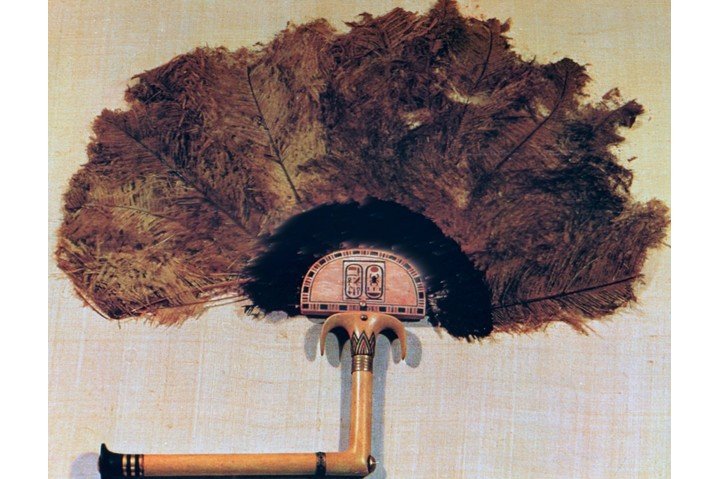1. His original name was not Tutankhamun

Tutankhamun was originally named Tutankhaten. This name, which literally means “living image of the Aten”, reflected the fact that Tutankhaten’s parents worshipped a sun god known as “the Aten”. After a few years on the throne the young king changed his religion, abandoned the Aten, and started to worship the god Amun [who was revered as king of the gods]. This caused him to change his name to Tutankhamun, or “living image of Amun”.
Tutankhamun was not, however, the name by which his people knew him. Like all of Egypt’s kings, Tutankhamun actually had five royal names. These took the form of short sentences that outlined the focus of his reign. Officially, he was:
(1) Horus Name: Image of births
(2) Two Ladies Name: Beautiful of laws who quells the Two Lands/who makes content all the gods
(3) Golden Horus Name: Elevated of appearances for the god/his father Re
(4) Prenomen: Nebkheperure
(5) Nomen: Tutankhamun
His last two names, known today as the prenomen and the nomen, are the names that we see written in cartouches (oval loops) on his monuments. We know him by his nomen, Tutankhamun. His people, however, knew him by his prenomen, Nebkheperure, which literally translates as “[the sun god] Re is the lord of manifestations”.
2. Tutankhamun loved to hunt ostriches

Tutankhamun’s ostrich-feather fan was discovered lying in his burial chamber, close by the king’s body. Originally the fan consisted of a long golden handle topped by a semi-circular ‘palm’ that supported 42 alternating brown and white feathers. These feathers crumbled away long ago, but their story is preserved in writing on the fan handle. This tells us that that the feathers were taken from ostriches captured by the king himself while hunting in the desert to the east of Heliopolis (near modern-day Cairo). The embossed scene on the palm shows, on one face, Tutankhamun setting off in his chariot to hunt ostrich, and on the reverse, the king returning in triumph with his prey.
*3. Tutankhamun’s heart is missing
The ancient Egyptians believed that it was possible to live again after death, but thought that this could only be achieved if the body was preserved in a lifelike condition. This led them to develop the science of artificial mummification.
Essentially, mummification involved desiccating the body in natron salt, then wrapping it in many layers of bandages to preserve a lifelike shape. The body’s internal organs were removed at the start of the mummification process and preserved separately. The brain, its function then unknown, was simply thrown away – the heart, rather than the brain, was regarded as the organ of reasoning. As such, the heart would be required in the afterlife. It was therefore left in place and, if accidentally removed, immediately sewn back; though not always in its original location.
Tutankhamun, however, has no heart. Instead he was provided with an amuletic scarab inscribed with a funerary spell. This may have happened simply because the undertakers were careless, but it could also be a sign that Tutankhamun died far from home. By the time his body arrived at the undertakers’ workshop, his heart may have been too decayed to be preserved.
3. Tutankhamun was buried in the world’s most expensive coffin

Two of Tutankhamun’s three coffins were made of wood, covered with gold sheet. But, to Howard Carter’s great surprise, the innermost coffin was made from thick sheets of beaten gold. This coffin measures 1.88m in length, and weighs 110.4kg. If it were to be scrapped today it would be worth well over £1m. But as Tutankhamun’s final resting place it is, of course, priceless.
Hi! I am a robot. I just upvoted you! I found similar content that readers might be interested in:
https://www.historyextra.com/period/ancient-egypt/8-things-you-probably-didnt-know-about-tutankhamun/
Congratulations @classyvideohub! You have completed the following achievement on the Steem blockchain and have been rewarded with new badge(s) :
Click here to view your Board of Honor
If you no longer want to receive notifications, reply to this comment with the word
STOPDo not miss the last post from @steemitboard: